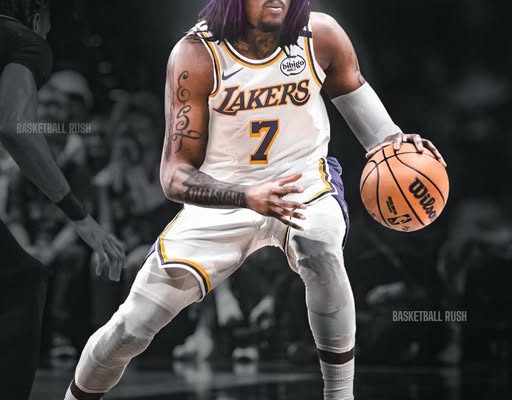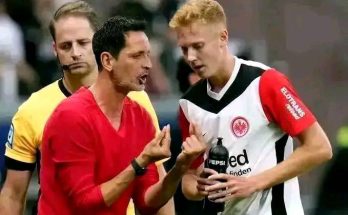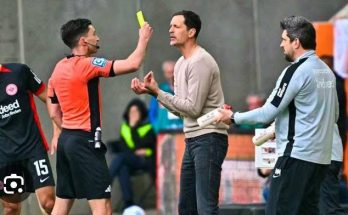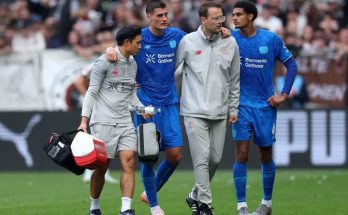Breaking reports have emerged that the Los Angeles Lakers were reportedly on the verge of acquiring Robert Williams, a move that, had it gone through, could have significantly altered both the team’s present roster construction and its long-term defensive identity. The rumor sent shockwaves through the NBA community, as Williams is widely regarded as one of the most dynamic rim protectors and rebounders in the league, with a defensive presence that has drawn praise from coaches, analysts, and players alike since his breakout years with the Boston Celtics. Known for his elite shot-blocking, quick-twitch athleticism, and ability to anchor a defense, Williams would have given the Lakers a rare and versatile frontcourt piece to pair alongside Anthony Davis, potentially forming one of the most intimidating defensive duos in recent memory. For a Lakers team that has been navigating a mix of offensive inconsistency and defensive lapses over the past couple of seasons, the acquisition of Williams would have been viewed as a high-upside gamble—particularly considering his injury history—which may have been the very factor that prevented the deal from crossing the finish line. Still, the mere fact that discussions reportedly reached the verge of completion signals that the Lakers’ front office is actively exploring ways to fortify the team’s interior defense and rebounding, even if it means making bold moves that could reshape the rotation.
Sources indicate that the talks surrounding Williams gained traction due to a combination of factors, including Boston’s past willingness to move on from certain core players for the right package and the Lakers’ growing urgency to find a long-term defensive anchor beyond Davis. The reported trade framework remains under wraps, but speculation suggests that Los Angeles would have had to part with valuable rotation players and possibly draft capital to secure Williams’ services. This would not have been a minor reshuffling; it would have represented a clear shift in the team’s priorities, moving further toward a defense-first identity. The deal, however, ultimately stalled—possibly due to concerns about Williams’ health, given that he has dealt with knee issues in recent seasons that have limited his availability. These concerns are not insignificant, as the Lakers have experienced the cost of relying heavily on injury-prone players, and the front office may have opted for caution over risk.
Had the trade gone through, the Lakers’ defensive schemes could have seen a dramatic transformation. Williams’ ability to guard multiple positions, block shots at an elite rate, and provide second-chance opportunities through offensive rebounds would have allowed the Lakers to unleash more aggressive perimeter defense, knowing they had a safety net behind them. Pairing him with Davis could have created a nightmare for opposing offenses, with two elite shot blockers patrolling the paint and capable of switching onto smaller players without creating mismatches. In the half-court, Williams’ lob threat in the pick-and-roll would have given LeBron James and D’Angelo Russell another dynamic option, potentially boosting the team’s offensive efficiency in ways that extend beyond just his scoring numbers. His presence could have also alleviated some of Davis’ defensive workload, keeping the star big man fresher for late-game situations and long playoff runs.
The timing of this near-acquisition also raises questions about the Lakers’ broader strategy. With LeBron James nearing the end of his career and the Western Conference as competitive as ever, Los Angeles is under pressure to construct a roster capable of contending immediately without compromising too much of its future. Williams, when healthy, fits that mold—young enough to be a foundational piece for the post-LeBron era, yet impactful enough to help win now. This balancing act between present contention and future sustainability has been a consistent theme in the Lakers’ front-office decision-making, and the Williams situation underscores how thin the margin for error can be when evaluating potential trades. One false step could compromise the team’s ability to compete both now and in the years to come.
Fans and analysts have been quick to weigh in on the reports, with many lamenting what they perceive as a missed opportunity for Los Angeles to acquire a defensive difference-maker in his prime. Others, however, view the near-miss as a bullet dodged, arguing that Williams’ injury concerns and the possible cost of acquiring him could have placed too much strain on the Lakers’ depth and flexibility. The debate reflects a broader truth about the NBA trade market—sometimes the deals that don’t happen are just as telling as those that do. For now, the Lakers will continue forward with their current roster, but this near acquisition of Robert Williams will linger in the minds of fans as a “what if” scenario, especially if the team struggles defensively or falls short in the postseason.
The fact that the Lakers were reportedly this close to adding Williams suggests that they are far from done exploring trade opportunities. As the season progresses and the trade deadline approaches, Los Angeles could revisit similar deals if circumstances change—whether that means Williams becomes more available or another defensive-minded big man emerges as a target. For now, though, the Lakers will need to make the most of the roster they have, even as whispers of what might have been continue to circulate. In a league where championship windows can close in the blink of an eye, the margin between landing a player like Robert Williams and missing out can be the difference between a deep playoff run and another year of falling short. If the Lakers’ reported pursuit of Williams tells us anything, it’s that this front office is willing to push to the edge for the right piece—and perhaps, in the months to come, they’ll take that final step.



